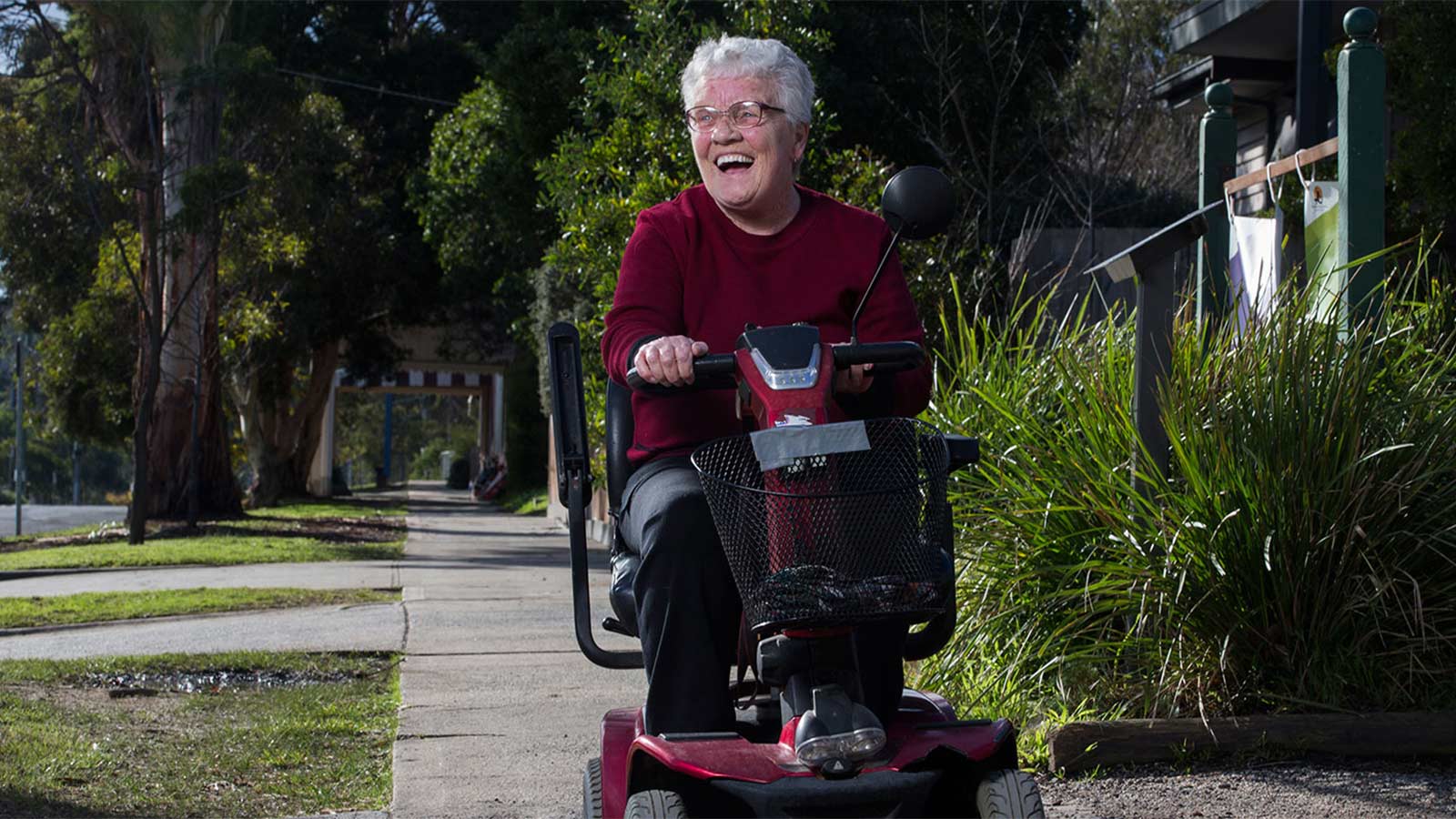Motorised mobility devices are used by people with limited mobility. In this section, we suggest our top tips for staying safe and summarise the key rules you should know.
Rules for using mobility devices
Mobility devices in Victoria
Motorised mobility devices don’t need to be registered and a licence isn’t required. People using them are considered pedestrians and can only be used if the person has an injury, disability or other medical condition that affects their ability to walk.
Under the Road Safety Act and Victorian Road Safety Road Rules 2017, motorised mobility devices such as mobility scooters and electric wheelchairs must have a maximum speed of 10km/h on level ground and weigh no more than 110kg without the user or luggage on board.
Before purchasing a mobility scooter, make sure it meets the above requirements. If you’re concerned your device doesn’t meet these requirements, seek advice from VicRoads.
People using motorised mobility devices need to follow the same rules as pedestrians. This means:
- Travelling on the footpath unless impractical to do so.
- If you need to travel on the road you must travel facing oncoming traffic.
- Crossing roads at the shortest possible route.
- Giving way to cars entering or exiting a roundabout.
- Giving way to bicycle riders when crossing a bicycle path.
- Not obstructing the path of a driver or another pedestrian.
- Not parking in an area that blocks the path of other pedestrians.
Refer to rules 18, 228 and 239 of the Victorian Road Safety Road Rules 2017.
- Avoid headphones and using a mobile phone while riding.
- Travel at a speed that allows you to stop quickly and easily.
- Where possible, keep to areas with pedestrian access and footpaths.
- On footpaths, be cautious around other pedestrians as you are likely to be travelling faster than them. Other pedestrians aren’t required to give way to mobility scooters.
- Try to make eye contact with drivers and riders before crossing a road.
Related reading
- VicRoads’ guide to choosing and using a mobility scooter
- Public Transport Victoria’s advice on taking your motorised mobility device on public transport
- Commercial Passenger Vehicles Victoria’s guide to travelling with a disability
- Road rules for skateboards, scooters and rollerblades
- Buying and owning a mobility scooter
The summaries RACV provide on Victorian road rules are based on the Victorian Road Safety Road Rules 2017. We make sure to reference the exact rule where possible. When reading, keep in mind that we’re providing general information, not legal advice. If you’re looking for specific questions on any legal matter, consult with a lawyer for help.
